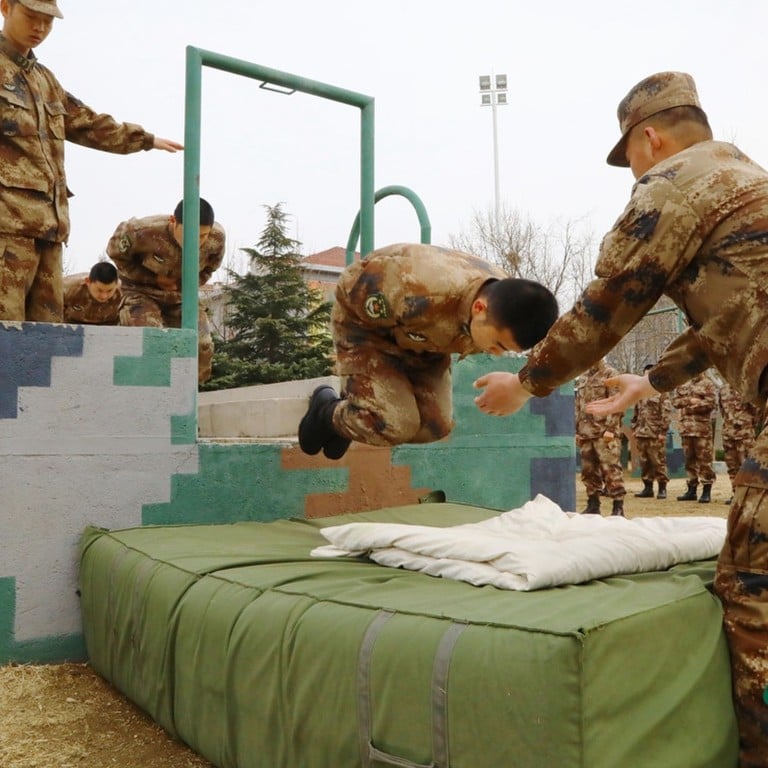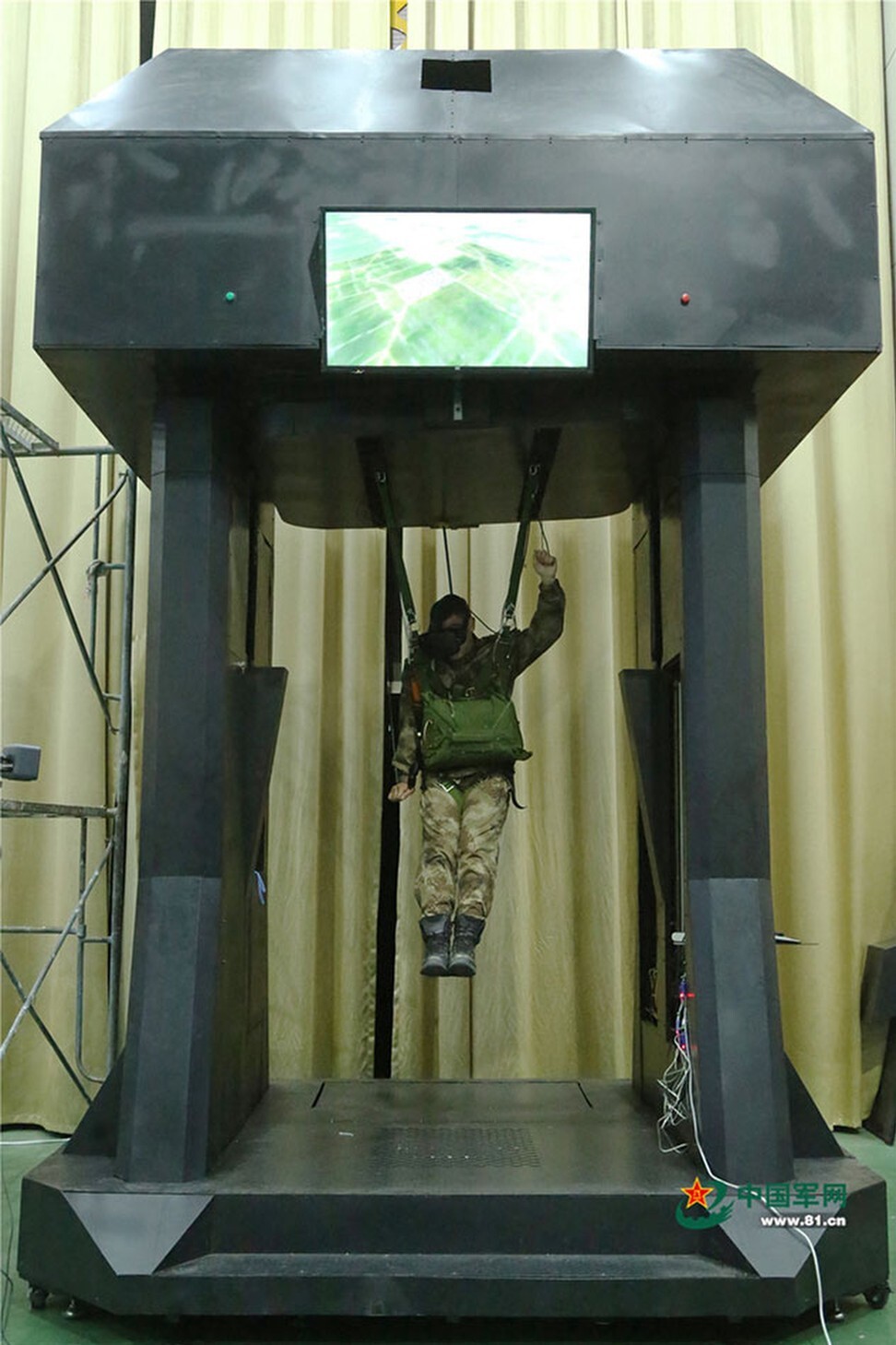
Chinese military using virtual reality to boost their combat readiness
- Training forms part of PLA’s plans to switch from a Russian model to American-style methods
- New recruits using VR for parachuting training because youngsters are more receptive to the technology
Chinese military newspaper PLA Daily on Monday carried a report about a brigade of newly recruited paratroopers completing their interim assessment last month.
Brigade commanders were quoted as saying that the new recruits had all gone through the parachuting training using virtual reality (VR) for the first time, and were satisfied with the results.

02:04
New video shows clash between Indian and Chinese troops on border
“VR airborne training is very flexible [in] its simulations of take-off and landing as well as some emergency situations [and the experiences] are very real, allowing me to undergo and learn the basic skills and theories of airborne experience,” new recruit Zhang Chuxuan was quoted as saying.
The report said VR was particularly suited to the new recruits because those “post-2000s” youngsters were more receptive to using new technologies and training methods.
Unlike their American and Russian counterparts, China’s People’s Liberation Army (PLA) lacks real combat experience since the country has not been engaged in major conflict since the Korean war in the 1950s. Since then, China has been involved in only the much smaller Sino-Indian border war in 1962 and the Sino-Vietnamese war in 1979.
Beijing-based military expert Zhou Chenming said the PLA paratroopers were transitioning from the Russian light infantry elite troop arrangement to the Americans’ airborne corps model, built on an independent special airborne troop design that emphasises cooperation among different armed force units in joint operation.
“The combat concepts between the Russian and American airborne forces are very different,” Zhou said, adding that the PLA was aiming to learn from the US model.
“The Russian paratroopers put their lives on the line in air raids, while the American airborne corps are well known for their stealthy nature and especially good at undertaking long-distance attack missions.”
In the US, airborne corps and their marine peers have long used virtual reality technology in their training. According to a report last month in Army Times, the US Army has finished the first field test of its enhanced do-it-all goggles that soldiers could receive by next year.
“Soldiers and marines ran the Integrated Visual Augmentation System through a company-sized, 72-hour training mission at Fort Pickett, Virginia, at the end of October, according to an Army statement,” the report said.
China military: how Beijing is pushing its plan for a modern armed forces
“The exercise included one of the more difficult dismounted operations – a nighttime trench clearing exercise.”
Military commentator and former PLA instructor Song Zhongping said the PLA’s VR training could be seen as a supplementary for the new recruits to help them to overcome some fears in parachuting.
“Virtual reality has become a popular training method because of its convenience in simulating different environments and all-weather conditions, but it’s impossible to let it replace the real training,” he said.
The PLA has also used VR technology to train pilot cadets in recent years, according to previous reports by PLA Daily and the Chinese defence ministry.


